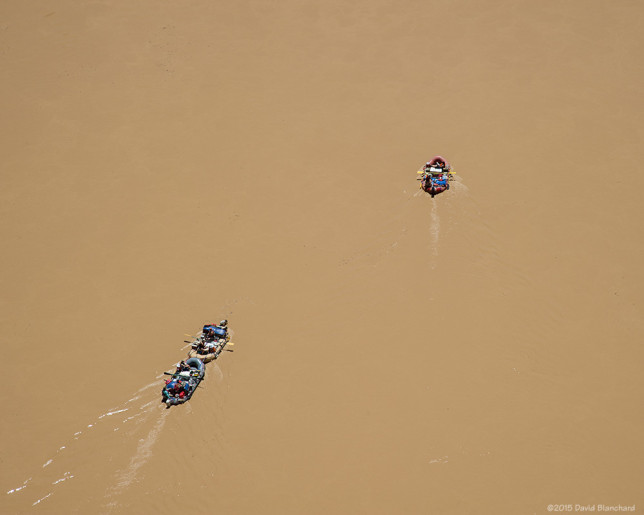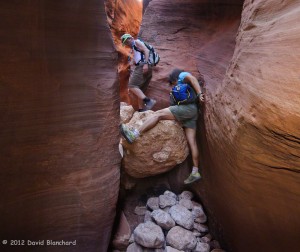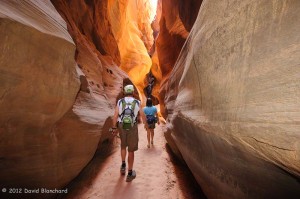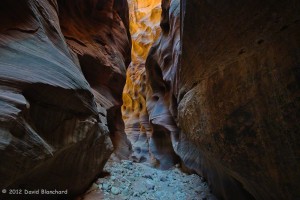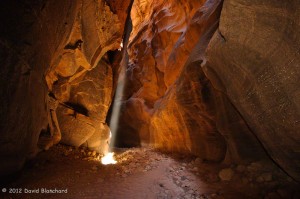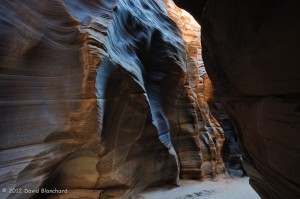Zion Narrows: It’s a trip we have thought about for several years. So when a friend indicated she wanted to do the Narrows this spring, we agreed to join her and plan a trip.
There are two different ways to hike Zion Narrows. The easiest and the one done by probably 99%+ of visitors to Zion National Park is to walk upstream from the Temple of Sinawava—the last stop on the summer shuttle bus. The other is much harder and is a full-day commitment. It requires a long drive to the upper end of the canyon followed by a 16-mile hike down through the canyon. Wading through water is required most of the way—and a few swims are also possible.
The full-day trip requires a permit. We decided that early June would be the best time because water levels have diminished from the high water of spring, water temperatures have slowly increased, days are long and hot, and the summer thunderstorm season has not started. This last point is an important one because this is not a good place to be if it begins to rain hard. Flash floods are possible and there are sections of the walk where no high ground is possible.
So we obtained a reservation for our permit—to be picked up the day before the hike.
But something strange happened to the weather this spring. Instead of the normally hot and dry months of May and June, we had rain and cool temperatures. And then there were the unseasonably strong and early hurricanes in the eastern Pacific this year. Hurricane Blanca, in particular, caused problems because it sent a substantial surge of tropical moisture northward. So what should have been a warm and dry June became a cool and wet June.
A Flash Flood Watch was issued for several days across southwestern Utah because conditions suggested that floods were possible. We declined the permit. Instead, we went hiking and did the Observation Point Trail.
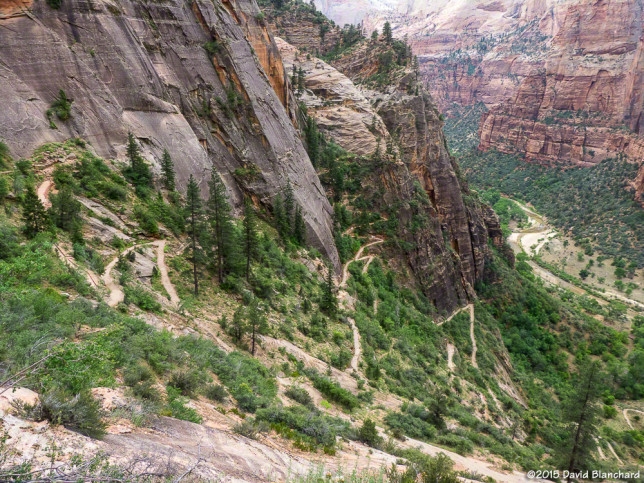

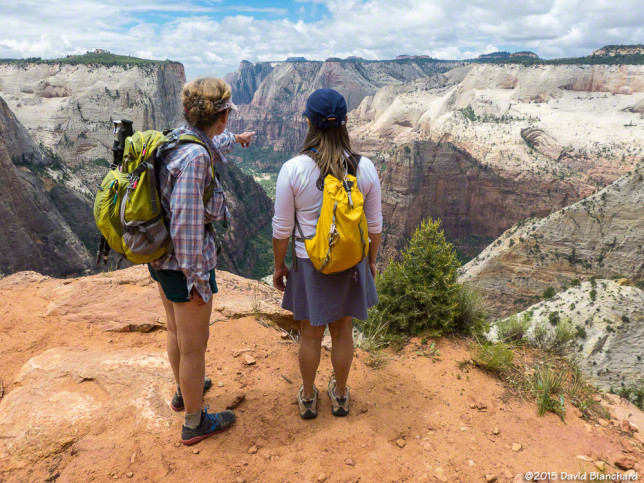
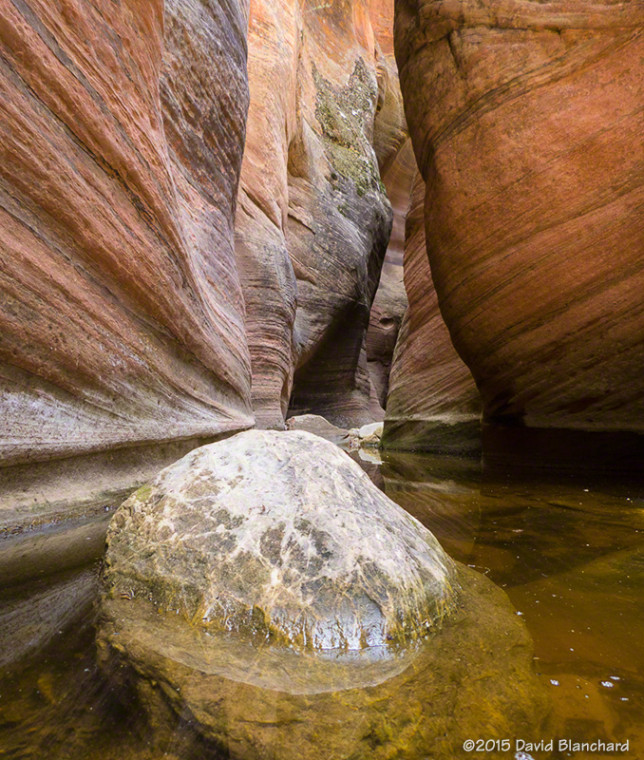
The next day, we decided to do the out-and-back version of Zion Narrows since this required far less time and commitment and provided some safety escape routes. At the beginning of the trail the Park Service had posted a sign indicating that a Flash Flood Watch was in effect and that flooding was possible. This didn’t seem to deter the folks intent on hiking up the river. I wonder how many of these visitors actually understood the situation? I certainly did. We would minimize the risk by starting and ending early before thunderstorms developed and we would minimize how far upstream we would travel so that we could stay in the wider and—hopefully—safer stretches of the canyon.

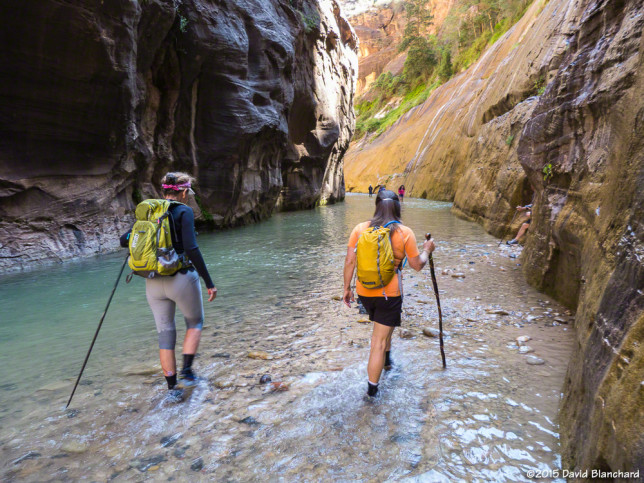
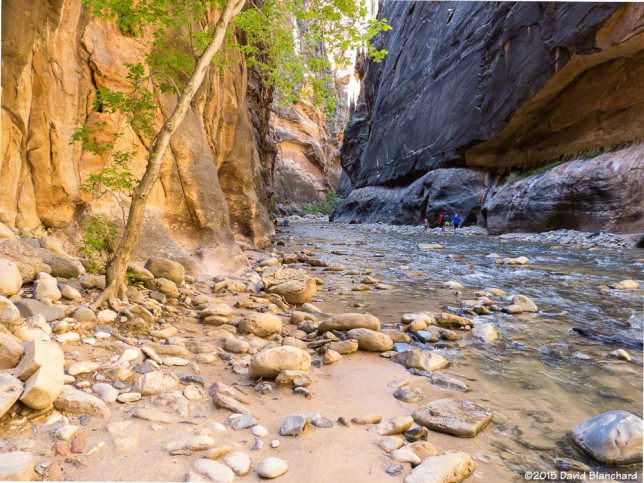
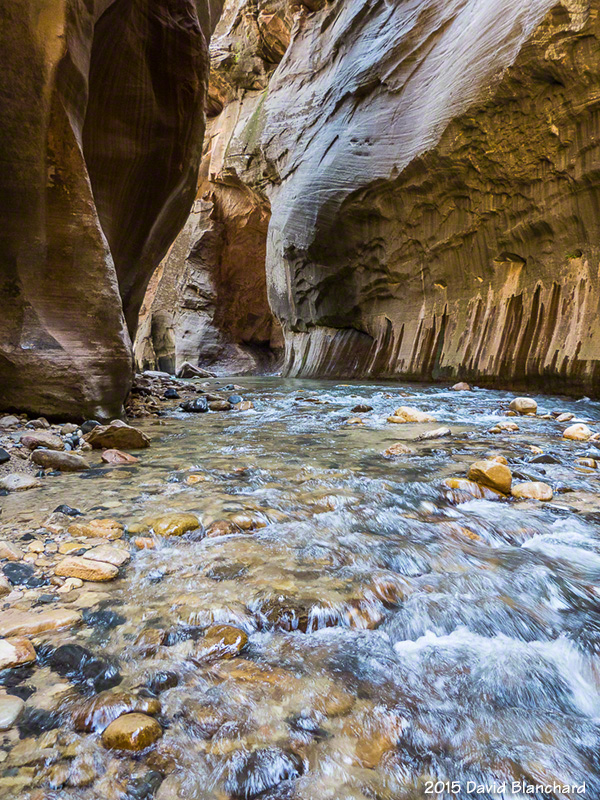
And so we set off under mostly sunny skies and warm temperatures. The water was cool but we had brought along neoprene socks and these did a fine job keeping our feet warm. After a few miles, we reached Orderville Canyon, a fine side canyon to explore. The water was shallower here with far less current making for easier travel. Until, that is, we reached some of the deep pools that required some swimming. So—we swam. Not too much farther upstream we were blocked from easy travel. We might have been able to bypass the rocks and logs at this point but with the weather situation looming we were content to let this be our turn-around point.
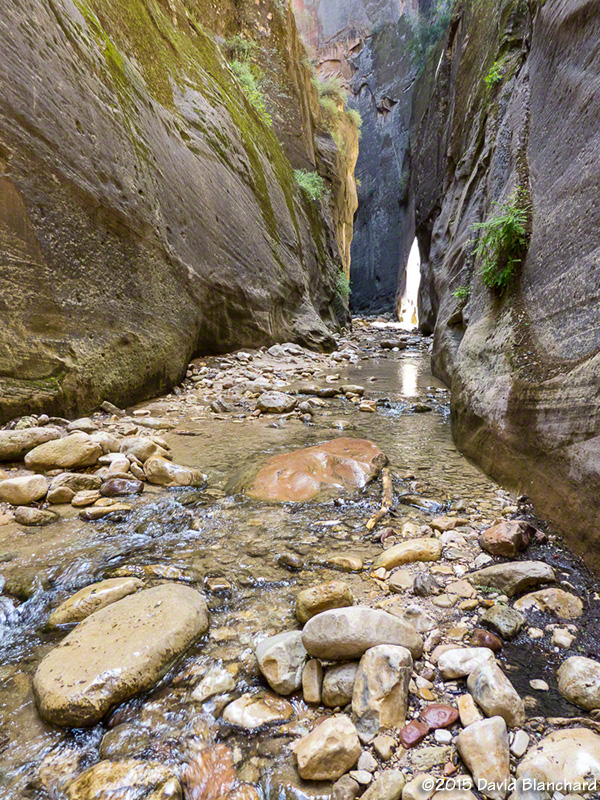
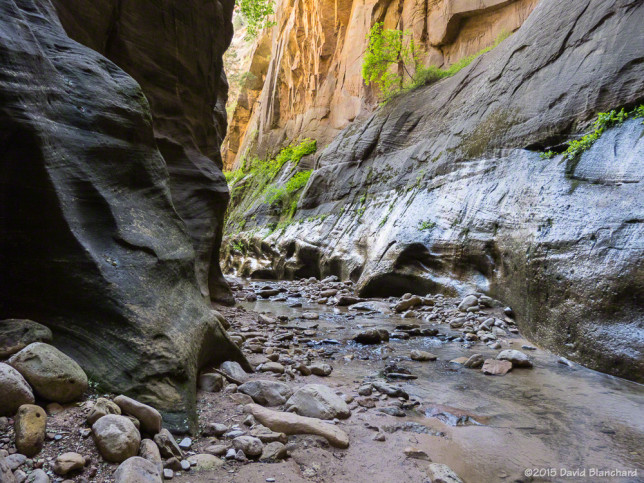
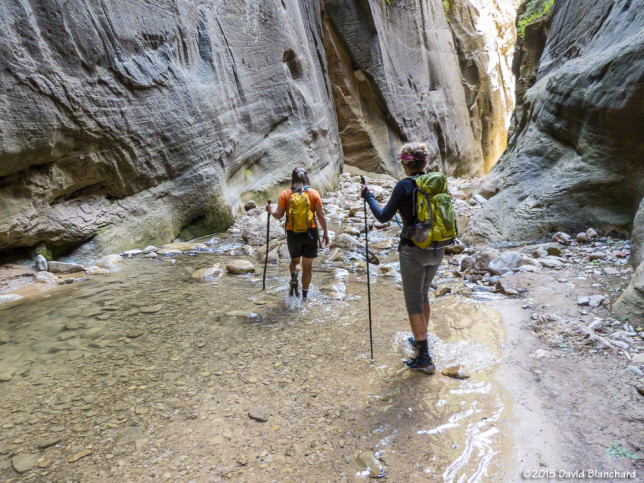
And, sure enough, on the way back, it began to rain. Not much, not long, but enough to be glad we were heading back downstream.

Oh, one more thing. While no flash floods occurred in Zion National Park that day, a large flash flood did occur not too far away along the Paria River, another popular canyon hike. Water levels rose from 8 cubic feet per second (cfs) to over 1000 cfs in less than an hour.

